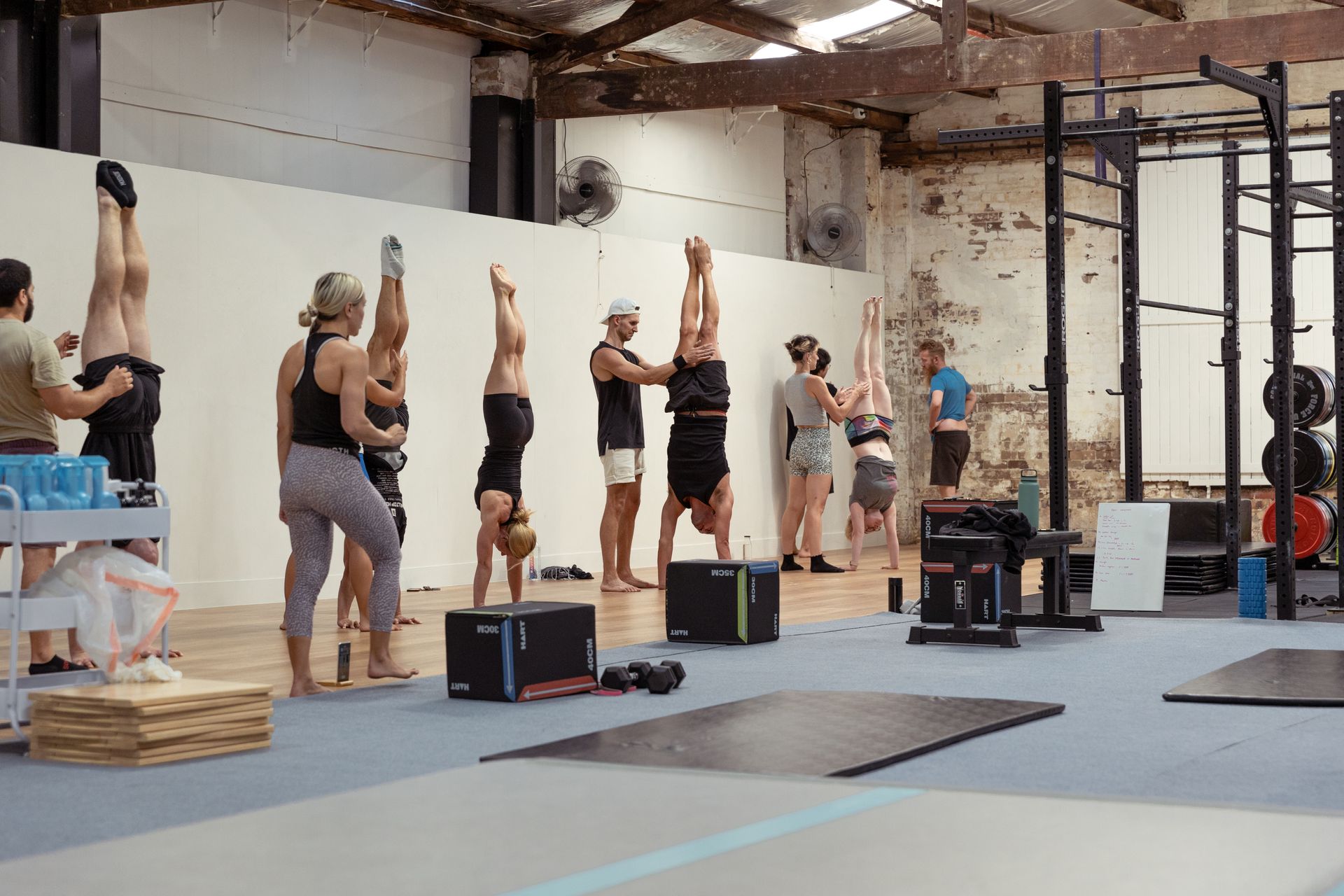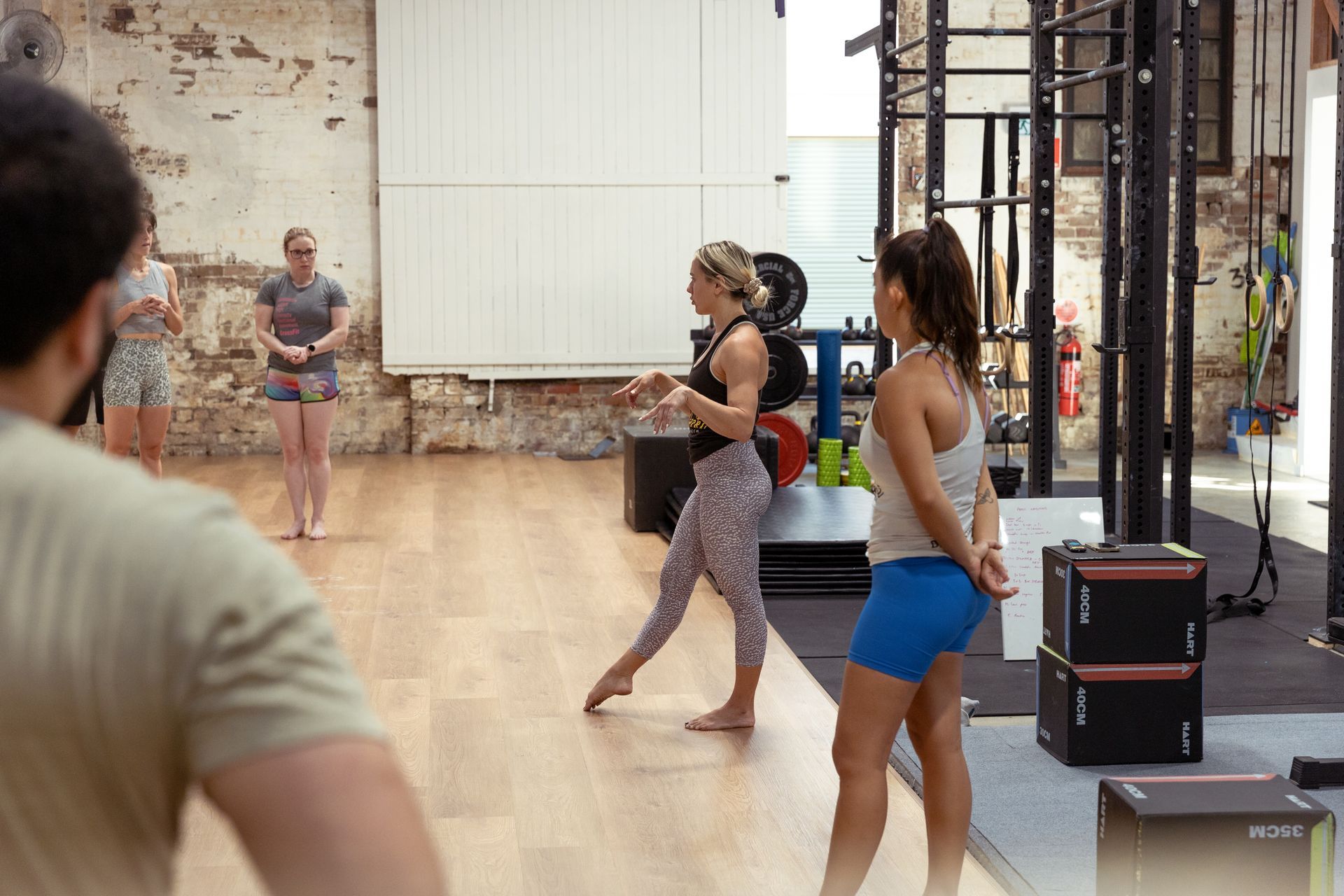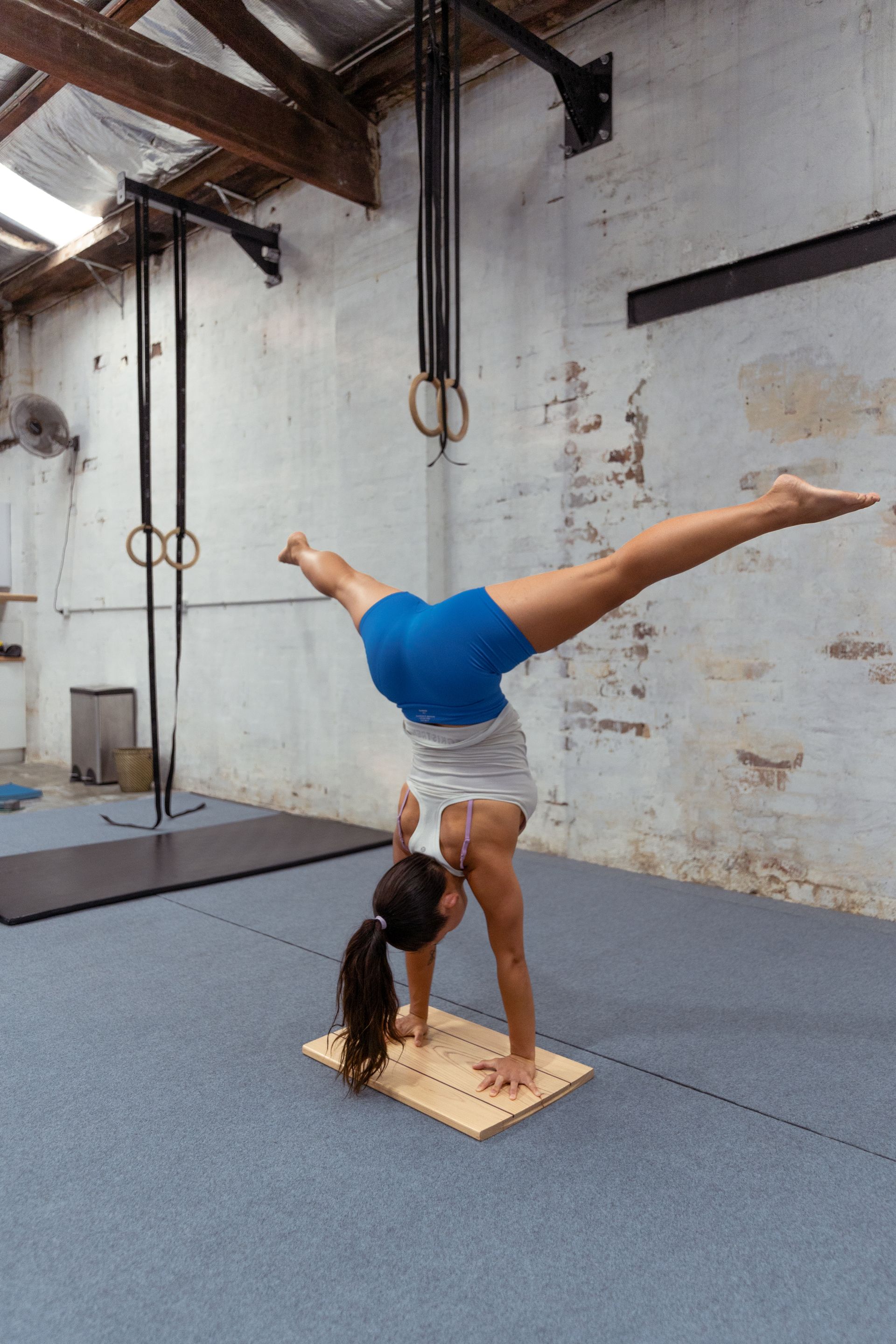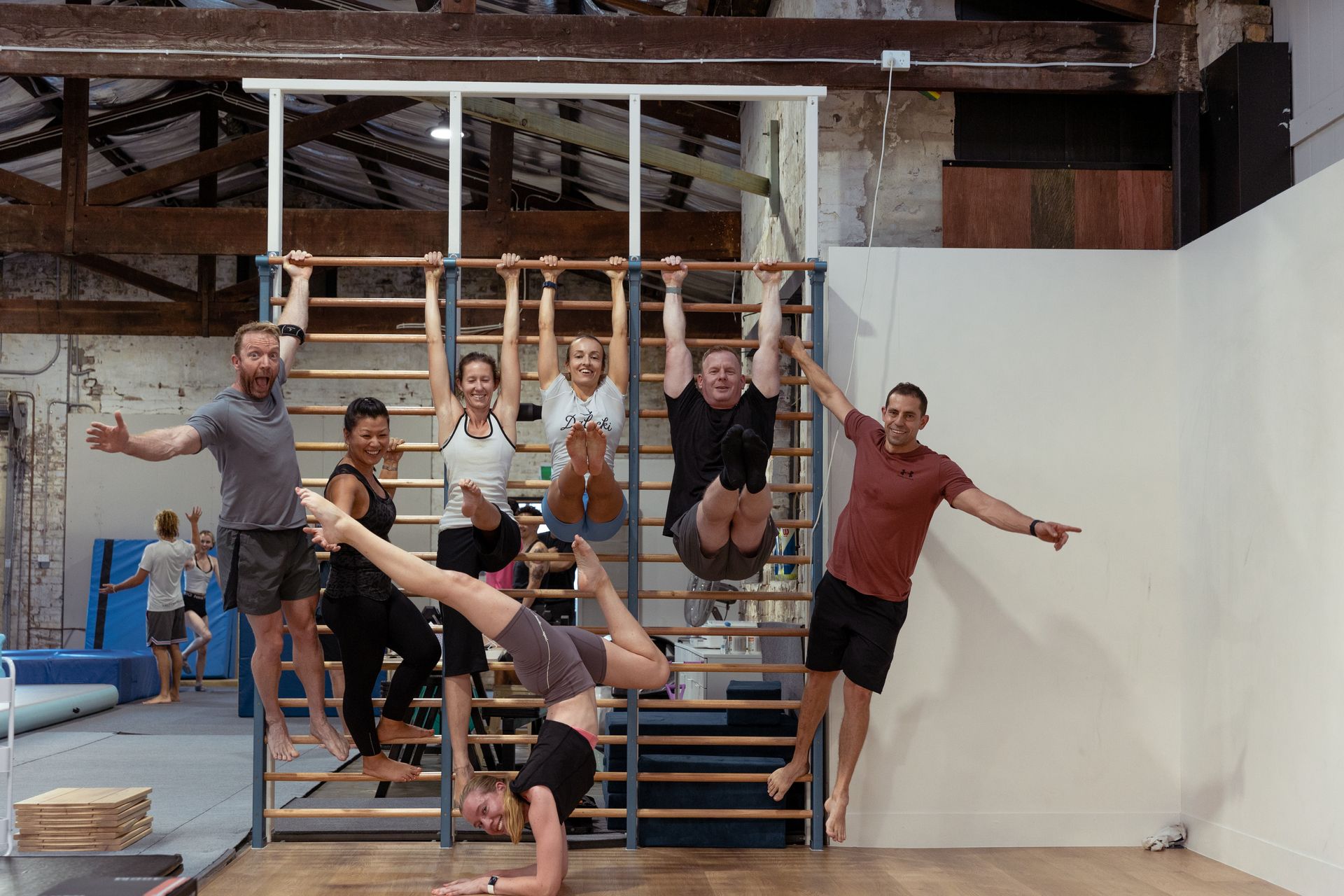Learning Calisthenics in Sydney: Top Tips for Beginners
Calisthenics training is a form of bodyweight strength training that has been growing in popularity over recent years. It involves using your own body weight as resistance to build strength, flexibility, and endurance. In Sydney, calisthenics training has become a popular choice for fitness enthusiasts looking for a challenging and fun workout that doesn't require equipment or a gym membership.
In this blog post, we will provide top tips for beginners interested in learning calisthenics training in Sydney. We will discuss the benefits of calisthenics training , why it's become so popular in Sydney, and how to get started with this form of exercise.

Benefits of Calisthenics Training
Calisthenics training is a highly effective way to build strength and increase flexibility, with several benefits that make it a great choice for beginners. Here are some of the main benefits of calisthenics training:
- It's accessible: You don't need a gym membership or any equipment to get started with calisthenics training. All you need is your own body weight and some open space.
- It's versatile: calisthenics training can be adapted to suit a wide range of fitness levels and goals, from beginner to advanced. You can also modify exercises to target specific muscle groups or work on your weaknesses.
- It builds functional strength: calisthenics training movements are designed to mimic everyday movements, such as pulling, pushing, and squatting. This type of training helps build strength that translates to real-life activities.
- It improves flexibility: Many calisthenics training movements require a high degree of flexibility, such as handstands and splits. Incorporating these movements into your training can help improve your flexibility and mobility.
- It's fun: calisthenics training provides a fun and challenging way to build strength and improve fitness. The variety of exercises and movements means you're unlikely to get bored with your workouts.
Popularity of calisthenics training in Sydney
Calisthenics training has become a popular form of exercise in Sydney for several reasons. Firstly, the city is known for its outdoor lifestyle, and calisthenics training is a great way to take advantage of the city's parks and beaches. Secondly, many people are drawn to the community aspect of calisthenics, with groups forming to train and motivate each other. Finally, calisthenics training provides a challenging and effective workout that doesn't require any equipment or gym membership, making it an accessible option for many people.
Calisthenics training is a fun and effective way to build strength, flexibility, and endurance using your own body weight. It's become increasingly popular in Sydney due to its accessibility, versatility, and community aspect. In the next parts of this blog post, we'll provide tips for beginners looking to get started with calisthenics training in Sydney, including where to find classes, how to progress safely, and how to train for specific movements such as handstands and muscle ups.
Finding a Gym
When it comes to learning calisthenics, it's important to find a gym that specializes in this type of training. Calisthenics is a bodyweight-based training method that emphasizes functional movements and uses minimal equipment. It requires a lot of skill and technique, and a specialized gym will have the expertise and equipment necessary to help beginners learn the proper form and progressions.
Finding a gym that specializes in calisthenics will also help you stay motivated and engaged in your training. Calisthenics Training gyms often offer a variety of classes and workshops that cater to all levels of experience, and you'll have access to trainers and coaches who are experienced in teaching calisthenics techniques.
Tips for Finding the Best Calisthenics Training Gym in Sydney
If you're looking for the best calisthenics gym in Sydney, here are some tips to keep in mind:
- Look for a gym that specializes in calisthenics: As mentioned earlier, it's important to find a gym that specializes in calisthenics. Do some research and look for gyms that have a focus on bodyweight training and offer a variety of calisthenics classes.
- Check out the gym's equipment: calisthenics training gyms typically have a variety of equipment such as pull-up bars, rings, and parallettes. Make sure the gym you choose has the necessary equipment to help you progress in your training.
- Look for experienced trainers and coaches: The trainers and coaches at the gym should have experience in teaching calisthenics and be able to provide proper guidance and progressions to help you reach your goals.
- Consider location and pricing: Finding a gym that's conveniently located and fits within your budget is also important. Look for gyms that are easily accessible and offer pricing options that work for you.

Calisthenics Training for Beginners
Calisthenics training is a bodyweight-based workout that aims to increase strength, flexibility, and mobility. It's an effective way to train your entire body without any equipment. However, just like any other form of exercise, it's important to perform calisthenics training exercises with proper form to prevent injury and get the most out of your training.
Proper form is essential for preventing injury and maximizing the benefits of your calisthenics training. When performing calisthenics training exercises, it's important to maintain a neutral spine, engage your core muscles, and avoid arching or rounding your back. You should also keep your shoulders relaxed and away from your ears, and maintain proper alignment in your hips, knees, and ankles.
Basic calisthenics exercises for beginners
If you're new to calisthenics, it's important to start with basic exercises and gradually progress to more advanced moves. Here are some basic calisthenics exercises for beginners:
- Push-ups - This classic exercise targets the chest, triceps, and shoulders. Start with knee push-ups if regular push-ups are too difficult.
- Squats - This exercise targets the glutes, hamstrings, and quadriceps. Start with bodyweight squats and gradually add weight or resistance.
- Lunges - This exercise targets the same muscles as squats but also works your balance and coordination.
- Plank - This exercise targets your core muscles, including your abs, obliques, and lower back. Start with a 30-second hold and gradually increase the time.
- Pull-ups - This exercise targets your back and biceps. Start with assisted pull-ups or negative pull-ups if regular pull-ups are too difficult.
Tips for mastering the false grip pull-up and bar muscle-up:
The false grip is a technique used to grip the bar with the wrist bent backwards. This grip is essential for performing certain exercises such as the muscle-up. To master the false grip pull-up and bar muscle-up, follow these tips:
- Practice the false grip regularly: The false grip is an unnatural grip that requires practice to get comfortable with. Start by hanging from the bar with the false grip and gradually increase the amount of time you can hold it.
- Strengthen your grip: The false grip requires a lot of grip strength. To improve your grip strength, perform exercises such as farmer's walks, dead hangs, and grip strengtheners.
- Build your pulling strength: The muscle-up requires a strong pulling motion. To build your pulling strength, practice pull-ups, chin-ups, and rows.
- Use bands to assist: If you are struggling with the false grip pull-up or bar muscle-up, try using resistance bands to assist you. This can help you build the strength and technique needed to perform the exercises on your own.
Explanation of front and middle splits, back bridge, stalder press, and one-arm handstands:
- Front and middle splits: Front splits involve extending one leg forward while the other leg extends backward. Middle splits involve extending the legs to the sides. These stretches require a lot of flexibility and can take time to master. To improve your splits, practice stretching regularly and incorporate exercises that target the muscles used in splits.
- Back bridge: The back bridge is an exercise that involves extending the body backwards while supporting yourself with your arms and legs. This exercise targets the back, hips, and shoulders and can help improve flexibility and mobility.
- Stalder press: The stalder press is an advanced gymnastics move that involves pressing from a handstand position into a straddle L-sit. This move requires a lot of strength and flexibility and can take years to master. To work towards a stalder press, practice handstands, straddle L-sits, and pike compressions.
- One-arm handstands: The one-arm handstand is a challenging skill that requires a lot of strength and balance. To work towards a one-arm handstand, practice regular handstands and incorporate exercises that target the muscles used in balancing, such as shoulder stabilizers and core muscles.
Calisthenics training is a great way to improve strength, flexibility, and overall fitness. By focusing on proper form and technique, incorporating basic exercises, and gradually working towards advanced moves, beginners can make significant progress in their calisthenics training journey. Remember to also consider seeking out a qualified coach or trainer to help guide you and ensure you are practicing safely and effectively.
Importance of Strength and Flexibility Training
Calisthenics training, also known as bodyweight training, is a type of exercise that uses only the weight of the body to perform a range of movements. It is an excellent way to build strength, endurance, and flexibility without the need for equipment. If you're new to calisthenics training, it can be a bit intimidating to know where to start. But with the right guidance, you can learn the basics and progress quickly.
Importance of Strength and Flexibility Training
Before we dive into the benefits of strength and flexibility training, it's important to understand why they are essential for calisthenics. calisthenics training requires a lot of body control, which is why it's crucial to build strength and flexibility. Strength training helps build muscle mass and improves the ability to perform challenging movements, such as push-ups, pull-ups, and squats. Flexibility training helps improve mobility and range of motion, which is crucial for performing movements such as splits, bridges, and handstands.
Benefits of Strength and Flexibility Training for Calisthenics Training
There are several benefits to incorporating strength and flexibility training into your calisthenics training routine:
- Improved Performance: Strength and flexibility training help improve your overall performance, making it easier to perform advanced movements.
- Injury Prevention: Strength and flexibility training can help prevent injuries by building a strong and resilient body.
- Increased Muscle Mass: Strength training can help build muscle mass, improving your overall physique and increasing your metabolism.
- Improved Range of Motion: Flexibility training helps improve your range of motion, making it easier to perform complex movements such as handstands and splits.
How to Incorporate Strength and Flexibility Training into a Calisthenics TrainingRoutine
If you're new to calisthenics, it's important to start with the basics and gradually progress to more advanced movements. Here are some tips to incorporate strength and flexibility training into your routine:
- Warm-up: Begin each session with a warm-up that includes dynamic stretching, such as leg swings and arm circles, to prepare your body for the workout.
- Strength Training: Incorporate exercises such as push-ups, pull-ups, squats, and lunges into your routine to build strength.
- Flexibility Training: Practice flexibility exercises such as splits, bridges, and handstands to improve your range of motion.
- Cool-down: End each session with a cool-down that includes static stretching to help reduce muscle soreness and improve flexibility.
Benefits of Mobility Coach and Personal Training
Working with a mobility coach or personal trainer can provide several benefits, including:
- Personalized Training: A mobility coach or personal trainer can tailor your training to your specific needs and goals, helping you achieve better results.
- Technique Improvement: A mobility coach or personal trainer can help you improve your technique, reducing the risk of injury and improving your overall performance.
- Motivation: A mobility coach or personal trainer can help keep you motivated and accountable, ensuring you stay on track with your training.
Calisthenics is an excellent way to improve your strength, endurance, and flexibility. Incorporating strength and flexibility training into your routine can help you achieve better results and prevent injuries. Consider working with a mobility coach or personal trainer to achieve your goals more efficiently. So, if you're looking to learn calisthenics in Sydney, be sure to keep these tips in mind and start your journey towards a stronger and more flexible body.

Tips for Staying Motivated and Committed
Staying motivated and committed to any type of fitness routine can be challenging, but it's especially true for calisthenics training since it requires a lot of strength, patience, and perseverance. Here are some tips that can help you stay motivated and committed to your calisthenics training:
- Set achievable goals: Goals are essential to staying motivated in calisthenics training, but they need to be realistic and achievable. Start by setting small, achievable goals, such as doing five push-ups in a row or holding a plank for 30 seconds. Once you achieve these goals, set new ones that challenge you but are still within your reach.
- Find a training partner: Having someone to train with can make a huge difference in your motivation and commitment to calisthenics. A training partner can push you to work harder, provide support and accountability, and make your training sessions more enjoyable.
- Keep track of your progress: Tracking your progress can help you stay motivated and committed to calisthenics training. Keep a record of the exercises you do, the number of repetitions you complete, and the time you spend on each exercise. This will help you see how far you've come and provide you with the motivation to keep going.
- Mix it up: Doing the same exercises over and over again can become boring and demotivating. Mix up your routine by trying new exercises, increasing the number of repetitions, or changing the order in which you do your exercises. This will keep your workouts fresh and exciting and help you stay motivated.
- Celebrate your successes: Celebrate your successes, no matter how small they may seem. Recognize the progress you've made, and reward yourself with something you enjoy, like a healthy meal or a new workout outfit.
To stay committed to your calisthenics training, here are some additional tips:
- Schedule your workouts: Treat your calisthenics training like an appointment and schedule it into your day. This will help you make it a habit and prioritize your training.
- Stay consistent: Consistency is key to progress in calisthenics. Try to train at the same time and on the same days each week. This will help you stay consistent and make progress.
- Get enough rest: Rest is crucial for recovery and progress in calisthenics training. Make sure to get enough sleep, take rest days, and listen to your body when it needs a break.
- Stay motivated: Staying motivated is essential for commitment to calisthenics training. Find motivation in the progress you've made, the goals you've set, and the community around you.
Calisthenics training can be a challenging but rewarding form of fitness. By setting achievable goals, finding a training partner, tracking your progress, mixing up your routine, and celebrating your successes, you can stay motivated and committed to your training. And by scheduling your workouts, staying consistent, getting enough rest, and staying motivated, you can stay committed to your calisthenics training for the long haul. So, get out there and enjoy the journey of learning calisthenics in Sydney!

Conclusion
Calisthenics training is a fantastic way to get in shape, build strength and flexibility, and improve overall health and wellness. Whether you are a beginner or an experienced athlete, there are plenty of benefits to be had from training in calisthenics.
In Sydney, there are many opportunities to learn and train in calisthenics. From calisthenics training classes and clubs to personal trainers and gyms, there is something for everyone. By taking advantage of these resources, you can start to see improvements in your physical abilities and overall well-being.
Some of the key benefits of calisthenics training include improved strength and flexibility, increased mobility, better balance and coordination, and enhanced body awareness. Additionally, calisthenics training can be a great way to relieve stress and anxiety, and promote overall mental health and wellness.
If you are considering getting started with calisthenics in Sydney, there are plenty of resources available to you. Look for local gyms and studios that offer calisthenics training classes, or consider hiring a personal trainer who specializes in bodyweight training. Whatever your goals may be, there is sure to be a program or coach that can help you achieve them.
So why wait? If you are interested in learning calisthenics training and improving your fitness and wellness, now is the time to take action. Sign up for a class or join a gym in Sydney today, and start reaping the many benefits of calisthenics training.
GET IN TOUCH
We will get back to you as soon as possible.
Please try again later.
©2024 DALECKI STRENGTH. All right reserved.
Web Development and Strategy by NoCoincidence
